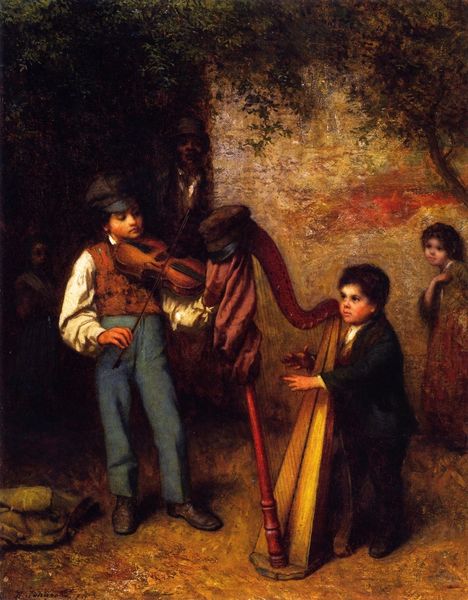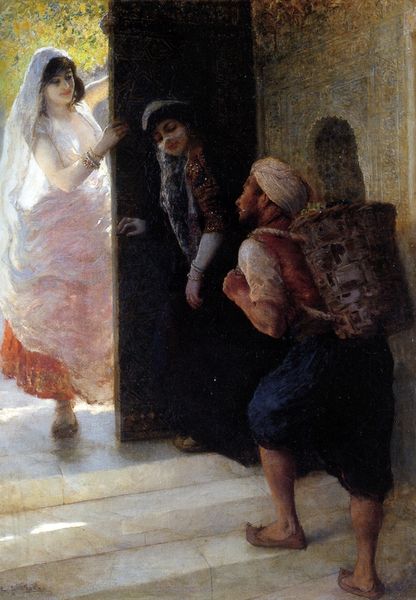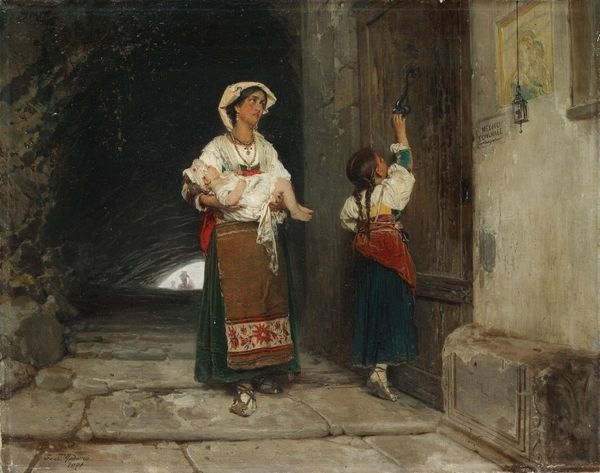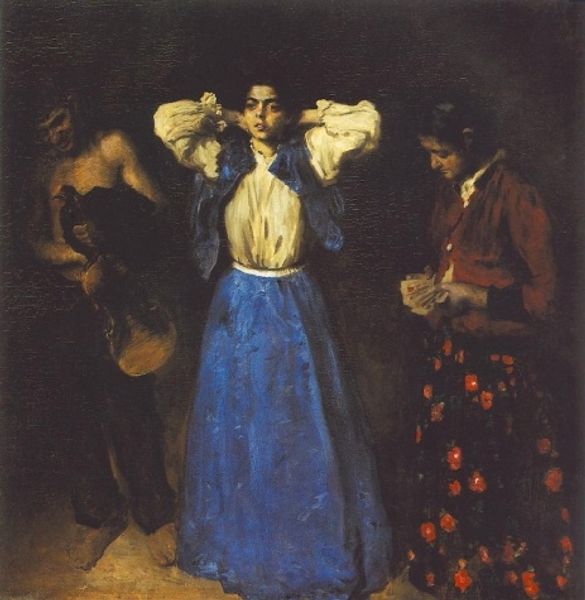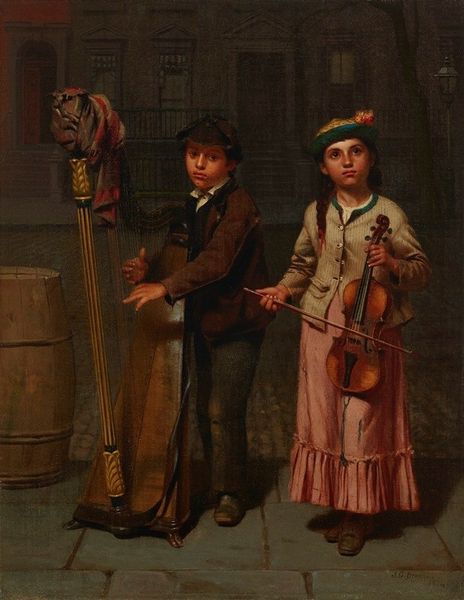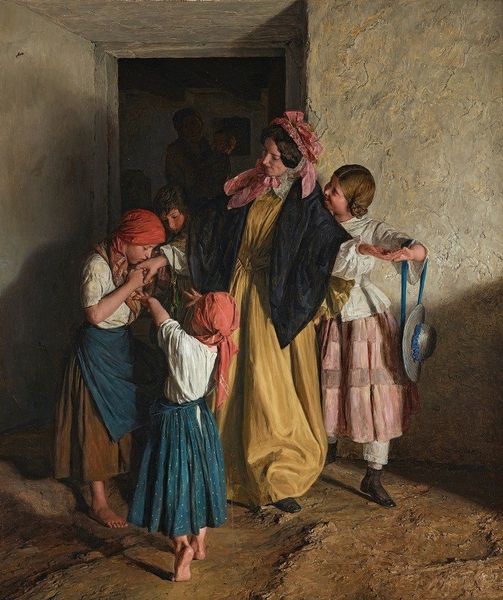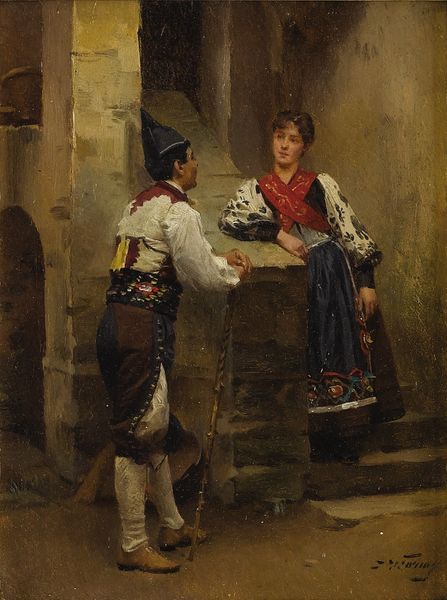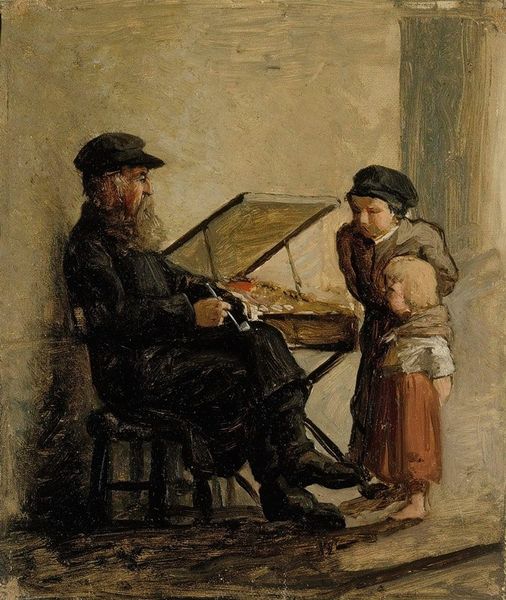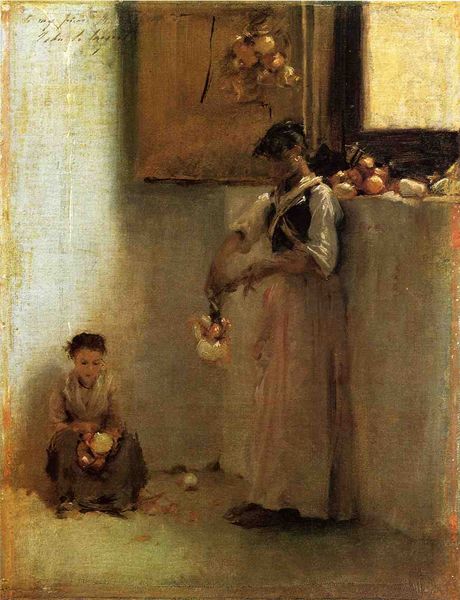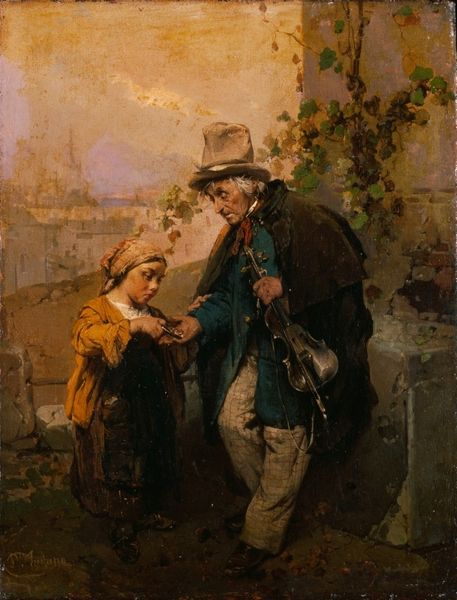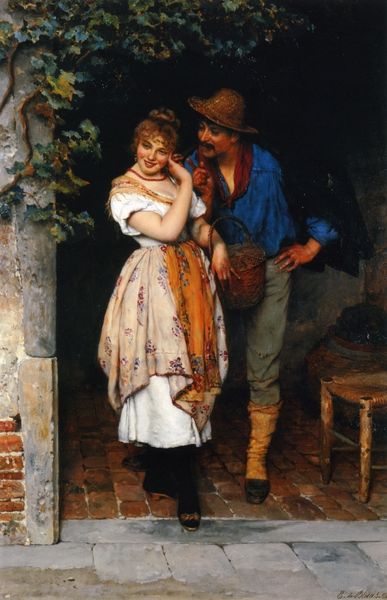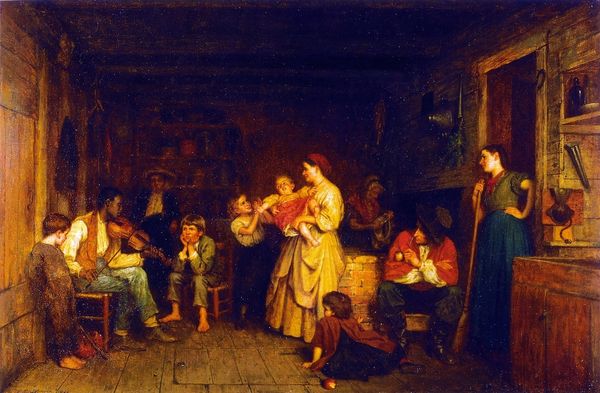
painting, oil-paint, impasto
#
portrait
#
16_19th-century
#
painting
#
oil-paint
#
oil painting
#
impasto
#
hudson-river-school
#
genre-painting
#
realism
Copyright: Public domain
Editor: So here we have Eastman Johnson's "Street Musicians," painted in 1861. It's an oil painting depicting three children. There's a melancholic air about them; their expressions seem so serious. What’s your take on this piece? Curator: Well, beyond the immediate realism, I see a commentary on social conditions. The American art scene of the 1860s was heavily influenced by social changes – industrialization, immigration, and the lead up to Civil War. Where do you think these children fit in that society? Editor: Perhaps they represent the plight of poor immigrant families at the time? Making music in the street to get by... It seems like a somber depiction, but I’m curious, does the composition or use of impasto contribute to its social meaning? Curator: Absolutely! The use of impasto adds a texture that emphasizes the grit and hardship of their lives. It almost brings the reality of poverty off the canvas and into the viewer's space. Moreover, consider the placement: they’re positioned in a shadowed entryway, aren't they? Is it simply for the sake of artistry, or perhaps suggesting a liminal existence? Editor: I see your point! That shadow is pretty telling, almost framing their vulnerability. Curator: Precisely. Johnson was astute to observe and portray the social landscape. The piece might provoke us to examine what purpose art had in reflecting a sense of social reality. Now, do you think Johnson intended for this image to be one of hope, or condemnation of the status quo? Editor: Hmmm, I still find it a bit pessimistic. Perhaps his goal was merely observational. This has made me look at it from a totally different angle; from the perspective of historical social forces. Curator: Indeed. And remember, art is always intertwined with its context. Analyzing this relationship adds new depths to a piece!
Comments
No comments
Be the first to comment and join the conversation on the ultimate creative platform.
